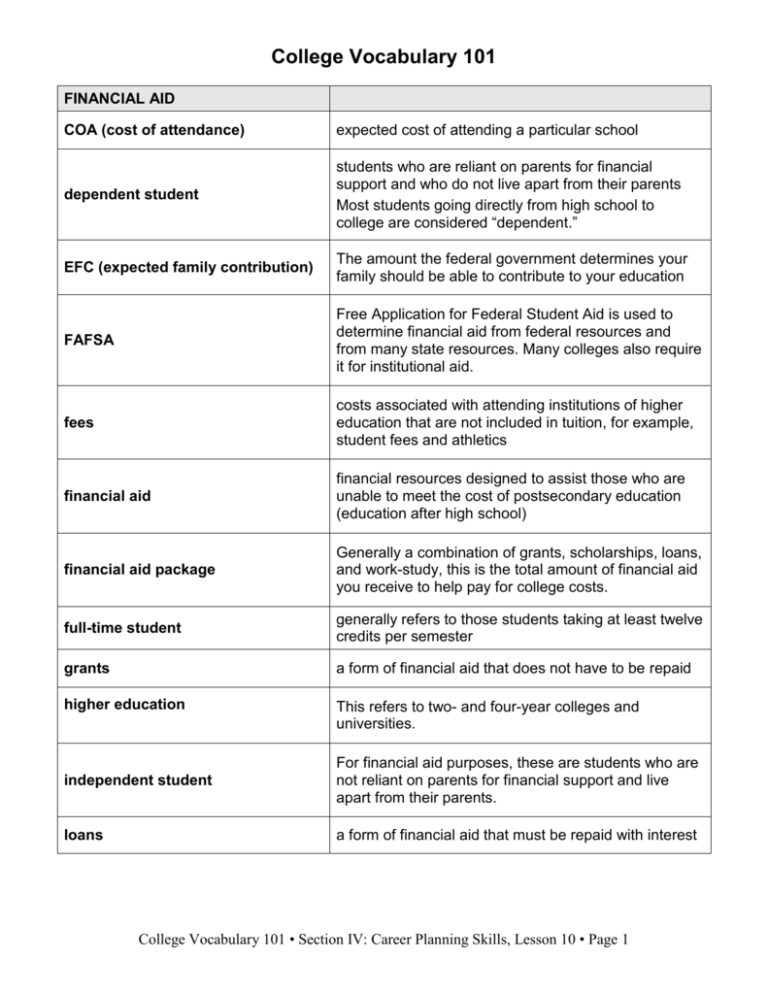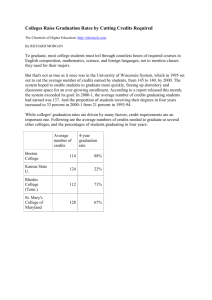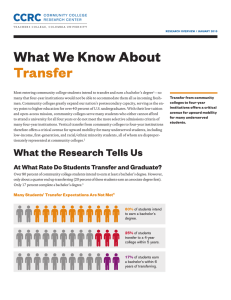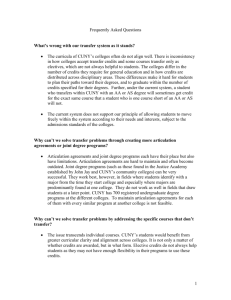VOCABULARY 101 FOR COLLEGE
advertisement

College Vocabulary 101 FINANCIAL AID COA (cost of attendance) expected cost of attending a particular school dependent student students who are reliant on parents for financial support and who do not live apart from their parents Most students going directly from high school to college are considered “dependent.” EFC (expected family contribution) The amount the federal government determines your family should be able to contribute to your education FAFSA Free Application for Federal Student Aid is used to determine financial aid from federal resources and from many state resources. Many colleges also require it for institutional aid. fees costs associated with attending institutions of higher education that are not included in tuition, for example, student fees and athletics financial aid financial resources designed to assist those who are unable to meet the cost of postsecondary education (education after high school) financial aid package Generally a combination of grants, scholarships, loans, and work-study, this is the total amount of financial aid you receive to help pay for college costs. full-time student generally refers to those students taking at least twelve credits per semester grants a form of financial aid that does not have to be repaid higher education This refers to two- and four-year colleges and universities. independent student For financial aid purposes, these are students who are not reliant on parents for financial support and live apart from their parents. loans a form of financial aid that must be repaid with interest College Vocabulary 101 • Section IV: Career Planning Skills, Lesson 10 • Page 1 loan forgiveness a program in which a borrower’s loans are paid off in exchange for paid work under conditions (duration, location, job description, etc) set by the institution that sponsored the loan matriculation the process of a student declaring his/her intention to pursue a particular degree or certificate at a specific college or university part-time student generally refers to those students who are not taking a full course load, but who are taking at least six credits per semester Pell grant a federal grant program to assist low-income students in attending institutions of higher education scholarships a form of financial aid that does not have to be repaid and is typically based on outstanding personal performance in an area such as academics, music, or athletics tuition the cost of attending an institution of higher education, which does not include room, board or additional student fees Work-study a federal financial aid program that awards students part-time jobs, usually on campus or at an off-campus nonprofit agency, to help cover part of college expenses. ACADEMIC Associates Degree It may take 2-5 years to achieve an Associate’s degree. In order to complete an Associate’s degree, you will need to complete 60 or more credits. Bachelor’s Degree Often called a four-year degree program, a Bachelor’s degree is granted for completion of a course of study usually requiring 120-128 semester credits. You cannot get a Bachelor’s degree at a two-year community college; however, you may be able to put your credits from the Associate’s degree towards a Bachelor’s degree. certificate These vary in length, but often they are the quickest route to a credential. At most community colleges, you will need 20-30 credits to complete a certificate. college credit Each course has a certain number of credits attached to it, which you earn when you pass the course. Each college requires students to earn a specific number of credits to graduate. college placement test A placement test determines how prepared you are to do college level work. Most community colleges College Vocabulary 101 • Section IV: Career Planning Skills, Lesson 10 • Page 2 expect students to take a placement test after they have been accepted at the school. credit hour The number of credit hours per course usually represents the number of class hours per week. co-requisite classes two or more classes that are required to be taken simultaneously developmental courses These help students brush up on basic skills like reading, writing, and math so students will be prepared for college-level work. Most schools do not offer credit towards a degree for these classes. elective course a course a student takes by choice, as distinguished from a course specifically required by a degree faculty the teachers and professors at a school or college interdisciplinary course a course dealing with two or more academic subjects Major Called a concentration at some colleges, a major is the primary subject you choose to study in college. A majority (but not all) of your college courses will be related to your major. mandatory/requisite class a class that is necessary in order to get your degree online course Sometimes referred to as web-based courses, these are regular college credit classes utilizing technology, including the Internet, to deliver course information and material and to promote class discussion. prerequisite class a class that is required to be completed before a student may enroll in a higher-level class survey course a course designed to provide a general overview of an area of study syllabus an outline of topics to be covered by the instructor including assignments to be completed by the students during the course TYPES OF EDUCATIONAL INSTITUTIONS private college or university a self-supporting institution of higher education operated with private funds public college or university an institution of higher education operated with state funds proprietary school privately owned and operated post-secondary schools organized as either non-profit or profit-making ventures primarily to teach vocational skills College Vocabulary 101 • Section IV: Career Planning Skills, Lesson 10 • Page 3 College Vocabulary 101 • Section IV: Career Planning Skills, Lesson 10 • Page 4







